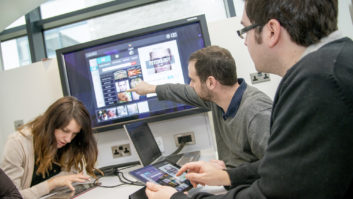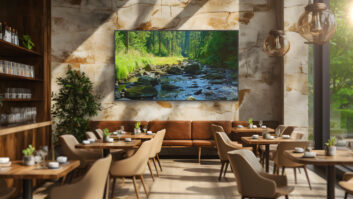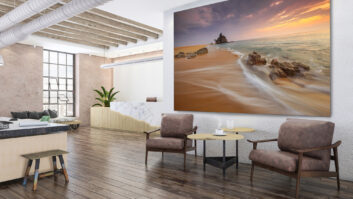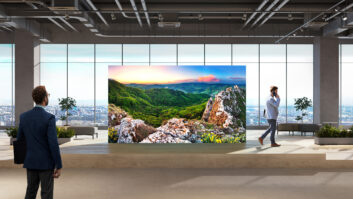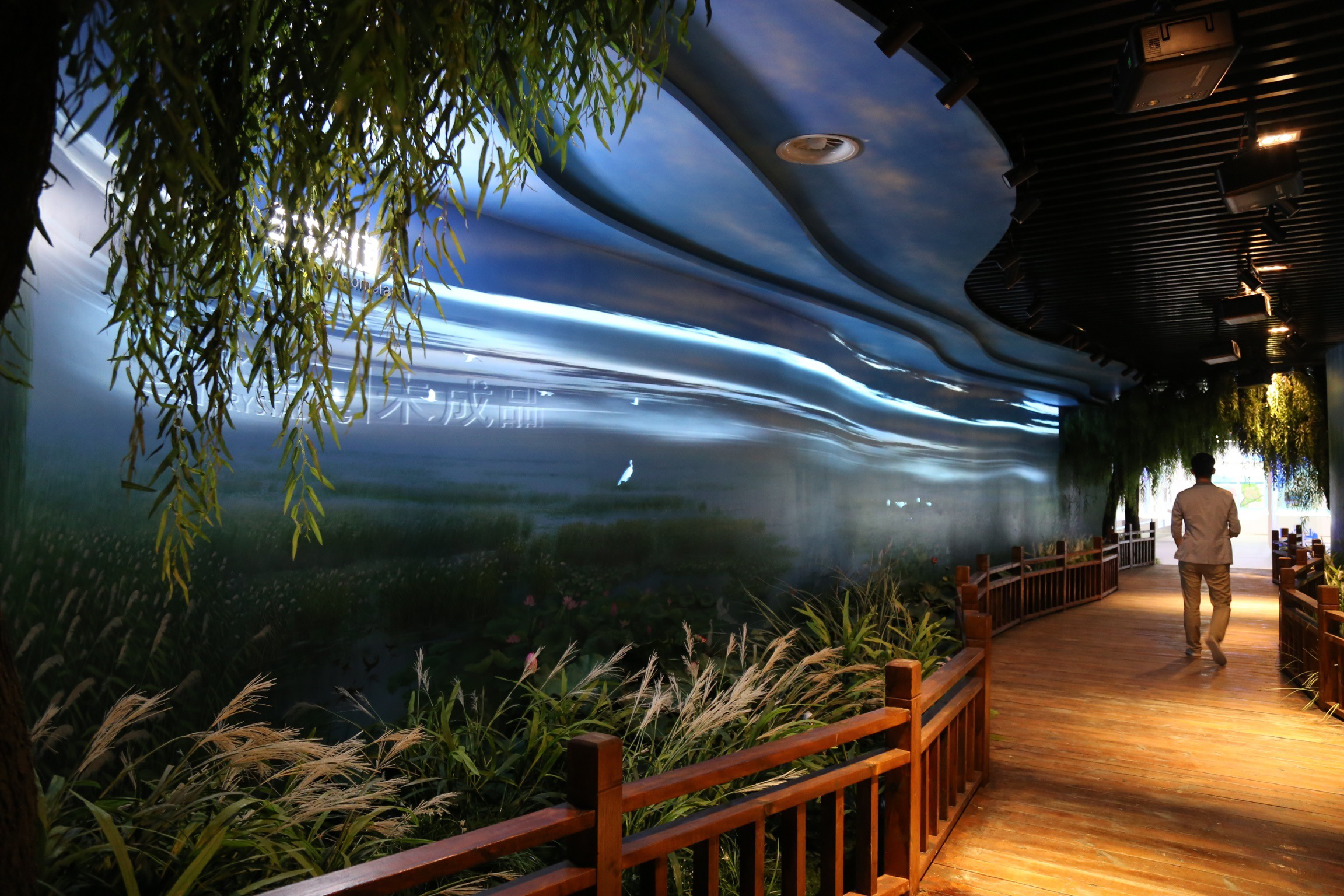
In recent years flatpanel displays have moved in on what has traditionally been the core projection market, however projection technology has remained resilient through its flexibility and versatility for a variety of applications, reports Ian McMurray.
Once upon a time, in a land far away, a large technology company bet hundreds of millions of dollars that flatpanel displays could never achieve the same image quality that was possible with projection, and that projection TVs were therefore the future. They lost the bet through making something of a schoolboy error: they underestimated the creativity, ingenuity and sheer will-to-win of Asian engineers.
Fast-forward a decade or so, and flatpanel displays are everywhere – delivering image quality that was once unthinkable. And yet: the projector market has proven to be exceptionally resilient. Not just resilient, in fact, but thriving.
It turns out, there are many reasons why that’s the case.
“Projection technology continues to be able to address challenging installation briefs while offering value for money,” says Colin Boyle, product marketing specialist, projectors at Canon Europe. “Additionally, there is ever-improving technology in the sector, with brightness and resolution increasing while new technologies emerge. For example, in the last year Canon has announced offerings in the portable projectors market along with WiFi-enabled and ultra-short throw projectors – and, more recently, our move into 4K projection. This provides a more versatile option for installations than flatpanel displays.”
“Some people just replace the projector they have with a newer version and don’t want to change all the cabling to another location,” believes Bram Dieryckx, director of product management for projection at Barco. “Some meeting rooms have a projection screen that is lowered in front of a window when people want to project. Others want bigger screens than the current affordable flatpanel display sizes.”
“Typically projectors are more flexible than flat screen displays because the size of the image projected can be adjusted to meet the needs of the customer and tailored to specific applications,” adds Damien Weissenburger, head of corporate and education solutions at Sony Professional Solutions Europe. “For large rooms which require large screens – more than 75in – or a more flexible format – that is, something other than 16:9 – projection remains the main technology. Projectors often provide a more affordable and flexible solution which can appeal to budget-conscious AV managers.”
Versatility, affordability, ease of installation are all contributing to projection’s longevity – even as flatpanel displays are getting larger and, in theory, displacing what would previously have been projection installations. But projectors have an important advantage here too.
Size is important
“It’s important that customers have a choice between flatpanels and projectors, and we offer them that choice,” says Guy Phelps, head of retail sales at NEC Display Solutions. “In terms of physical installation, for instance, projectors can offer a more practicable display solution. As an example, it would be a lot easier to get an installation projector up stairs or into a lift compared to a 98in flatpanel.”
You would think that a modular solution comprising multiple smaller flatpanel displays – in other words, a videowall – would alleviate that problem. Not necessarily, according to Phelps.
“With a videowall, you have to consider the impact of even the thinnest of bezels on the content being shown,” he says. “It would be unlikely that a videowall would be appropriate in a boardroom environment, where spreadsheets and key data will be shown. A projector is a lot more flexible and can achieve much larger bezel-less images. In addition, with a zoom lens, a projector can also offer a mix of image sizes within its focal range, thus making it more useful for rooms with dividers.”
There is, again, the issue of affordability. Of course, there are parts of the projector market that will always remain highly immune to incursion by flatpanel displays: high brightness comes immediately to mind.
“Without a doubt, flatpanels are creeping into smaller-screen projection applications and taking market share,” declares Mark Wadsworth, international marketing manager at Digital Projection. “This has not impacted Digital Projection up to this point – given the high light output and performance of our projection solutions. Even our lowest-cost projectors are typically employed where solutions for larger screens and higher-quality performances are demanded by the client. The majority of our projection solutions are 5,000 lumens and above. Given the lumen power we offer in our product line, nearly all of the applications where our projectors are employed are for screens that are much larger than 90in diagonal.”
Recent phenomenon
It’s not just high brightness, though. A phenomenon of recent times has been the rise in popularity of short throw projectors.
“We have seen uplift in the use of projectors, often with a relatively short throw distance,” asserts Hartmut Kulessa, marketing manager, projector products at Panasonic Visual System Solutions. “I think that Panasonic fuelled this trend a couple of years ago by developing lenses with 0.8:1 throw ratio, which still comes with the comfort and flexibility of a small shift and zoom range, which is vital for easing planning and installation.
“It is a fact,” he continues, “that the core projection market from 10 years ago, such as meeting rooms or classrooms, is today often equipped with flatpanel displays. On the other hand projection technology, which has been evolving with higher brightness, greater efficiency and products capable of long running hours at moderate cost, has moved into new markets such as museums, exhibitions and even outdoor advertising.”
Vivitek too has achieved success with its ultra-short throw projector offering, notes the company’s product marketing manager EMEA, Julia Lin – and its functionality is enhanced by the availability of interactivity.
Certainly, the advent of solid-state illumination (SSI) that Kulessa alludes to – whether LED or laser or a combination of the two – has done a great deal to redress the imbalance in cost of ownership between flatpanels and projectors. It has also meant that maintenance in hard-to-reach places – high on an auditorium ceiling, for example – is no longer an issue.
Barco visualisation solutions
Canon Europe
Digital Projection
NEC Display Solutions
Panasonic Visual System Solutions
Sony Professional Solutions Europe
Vivitek projectors
